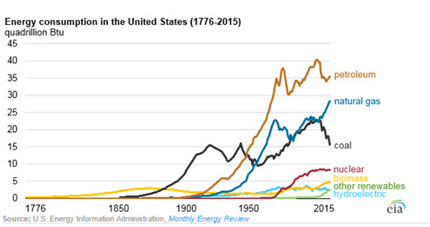WASHINGTON, July 14, 2016 - In 2015, the renewable share of energy consumption in the U.S. was its largest since the 1930s – at nearly 10 percent, according to the Energy Information Administration (EIA).
In 2015, fossil fuels made up 81.5 percent of total U.S. energy consumption, the lowest fossil fuel share in the past century, EIA notes.
But, despite recent market share declines, the EIA says three
fossil fuels – petroleum, natural gas and coal – have provided more
than 80 percent of total U.S. energy consumption for more than 100 years.
Projections from EIA's Annual Energy Outlook 2016, which reflect current laws and policies, predict declines to 76.6 percent by 2040. The EIA notes, however, that policy changes or technology breakthroughs could significantly change that projection.
EIA says the greatest growth in renewables over the past decade has been in solar and wind electricity generation. Liquid biofuels have also increased in recent years, EIA says, contributing to the growing renewable share of total energy consumption.
The most significant decline in recent years has been coal, says EIA. U.S. coal consumption fell 13 percent in 2015, the EIA says, which is the greatest annual percentage decrease of any fossil fuel in the past 50 years. EIA says the only similar declines were in 2009 and 2012, when coal fell 12 percent below the level of the previous year.
#30
For more news, go to: www.Agri-Pulse.com

